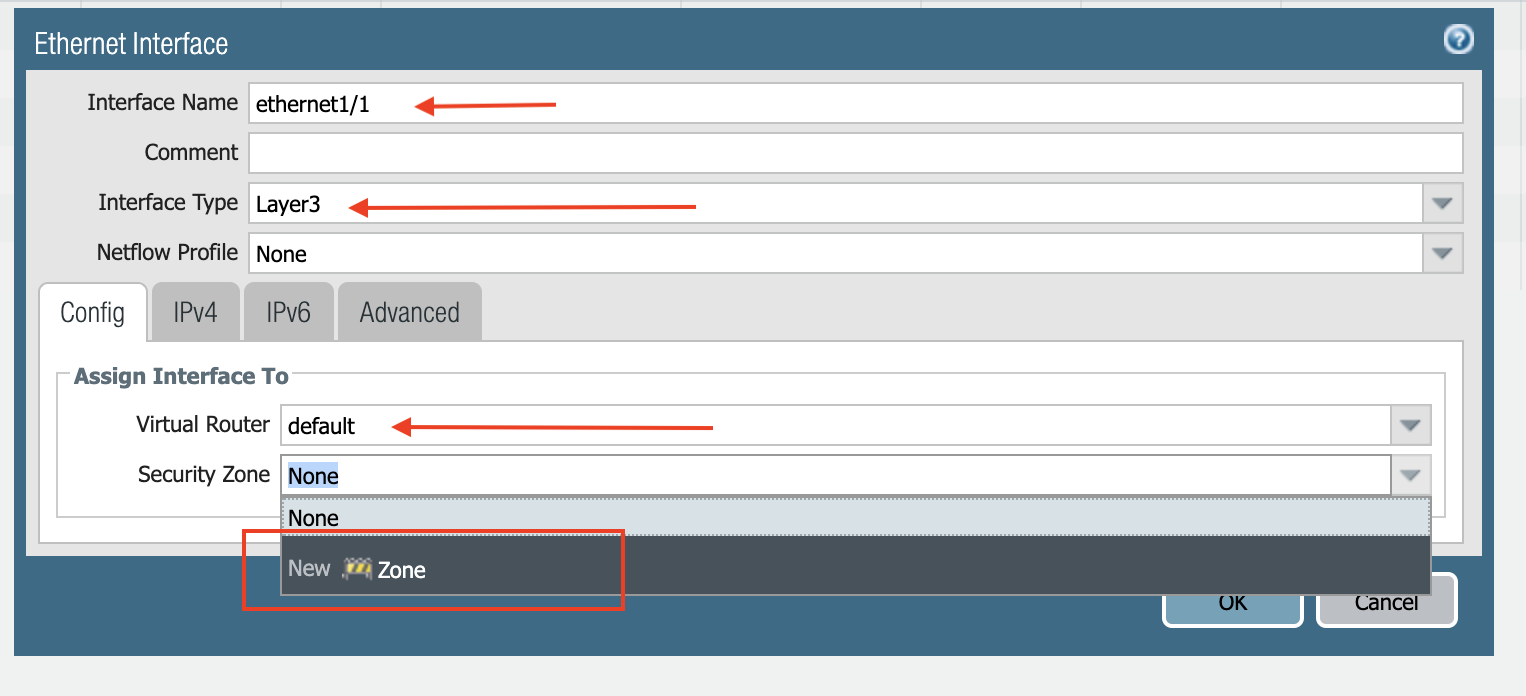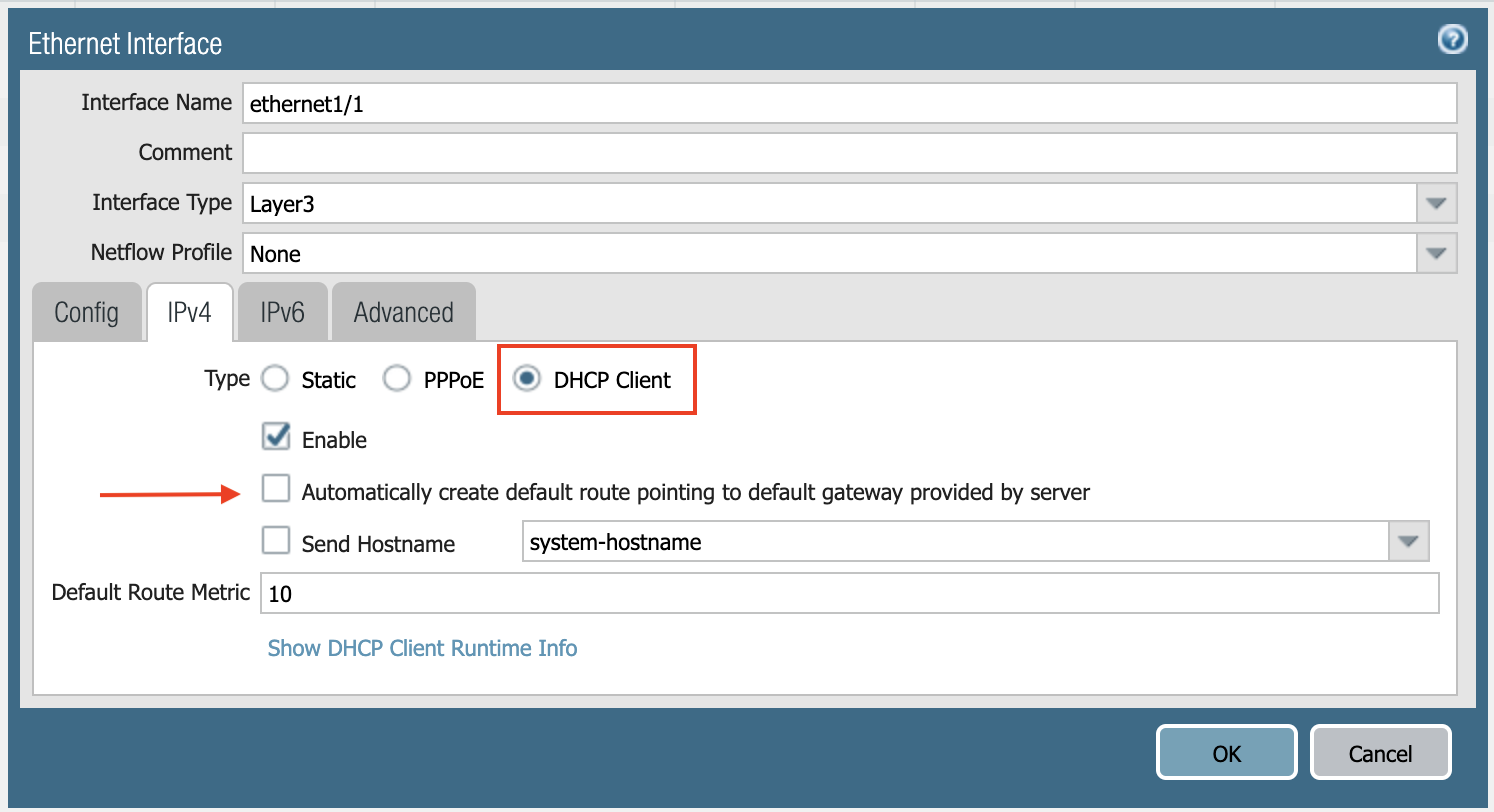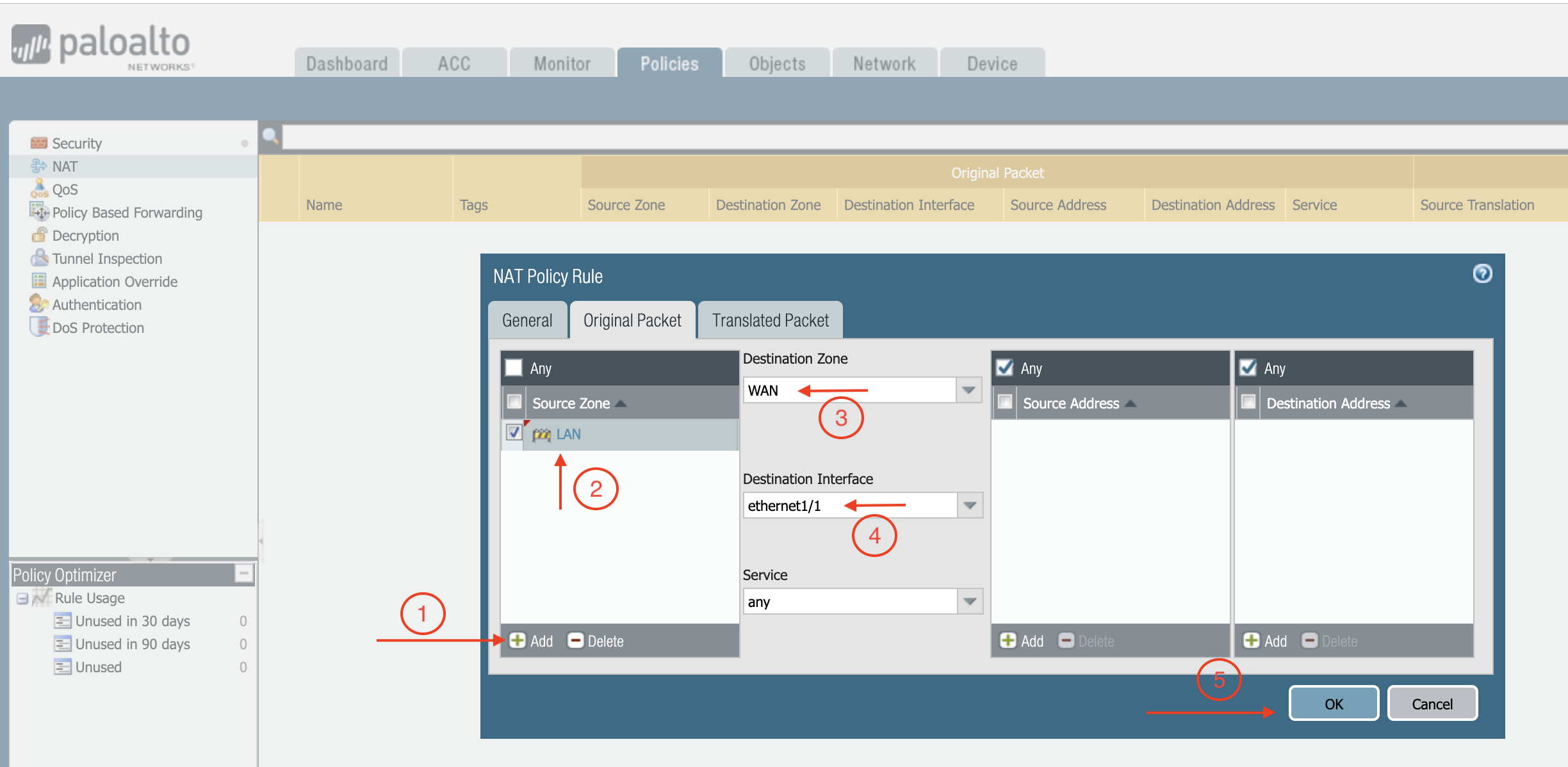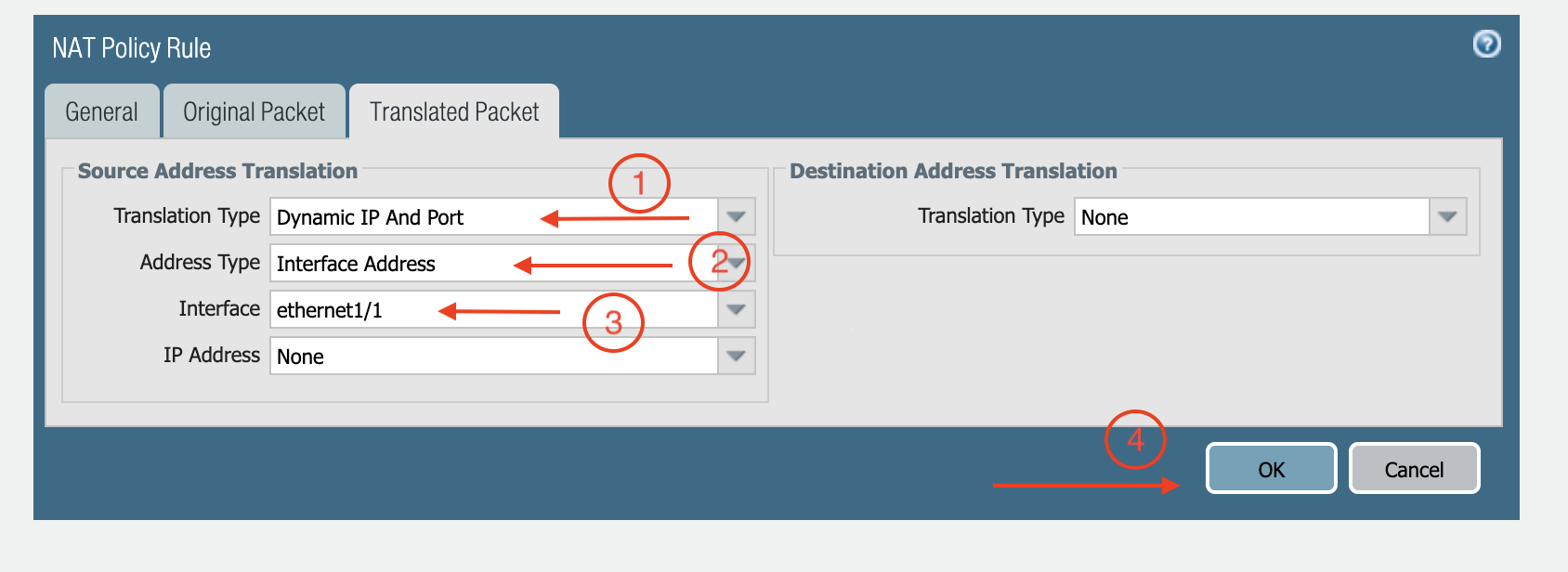Example Configuration for Palo Alto Network VM-Series in GCP
In this document, we provide an example to set up the VM-Series for you to validate that packets are indeed sent to the VM-Series for VPC-to-VPC and from VPC to internet traffic inspection.
VM-Series in AWS can be set up using the guide Palo Alto Networks VM-Series AWS Example.
VM-Series in Azure can be set up using the guide Palo Alto Networks VM-Series Azure Example.
| You must first have launched a firewall instance in GCP. |
After the firewall is launched, you can access its management UI from the Firewall tab.
Downloading VM-Series Access Key
After this
step in the workflow is completed, you can click the vertical ellipsis button ![]() and select Download Access Key.
and select Download Access Key.
If you get a download error, usually it means the VM-Series is not ready. Wait until it is ready, refresh the browser and then try again.
Resetting VM-Series Password
| After you download the .pem file, change the file permission to 400. If you are asked to enter a password during the login, the VM-Series is still not ready. Wait and try again. It usually takes up to 15 minutes for the VM-Series to be ready. When the VM-Series is ready, you will no longer be prompted for a password. |
For Metered AMI, open a terminal and run the following command.
ssh -i <private_key.pem> admin@<public-ip_address> configure set mgt-config users admin password commit
For BYOL, open a terminal and run the following command.
ssh -i <private_key.pem> admin@<public-ip_address> configure set mgt-config users admin password set deviceconfig system dns-setting servers primary <ip_address> commit
Terminate the SSH session.
Logging in to the VM-Series
-
In Aviatrix CoPilot, navigate to Security > FireNet > Firewall.
-
Click the Management UI link for the firewall. It takes you to the VM-Series you just launched.
-
Login with Username "admin". The password is the password you set in the previous step.
Dynamic Updates
-
From Device > Dynamic Updates in the Palo Alto firewall UI, click on Check Now to download and install the latest versions of Applications and Threats and Wildfire updates.
-
Click on Check Now again to download and install the latest version of Antivirus.
Configuring VM-Series ethernet1/1 with WAN Zone
After logging in, select the Network tab to see a list of ethernet interfaces. Click ethernet1/1 and configure as per the following screenshot.
-
Select the Network tab.
-
Click ethernet1/1.
-
Select layer3 for Interface Type.
-
Select the Config tab in the popup Ethernet Interface window.
-
Select the default for Virtual Router at the Config tab.
-
Click New Zone for Security Zone to create a WAN zone.
-
At the next popup screen, name the new zone "WAN" and click OK.

-
Select IPV4 tab in the popup Ethernet Interface window.
-
Select DHCP Client.
-
Uncheck the Automatically create default route pointing to default gateway provided by server, as shown below.

-
Click Commit. Once Commit is complete, you should see the Link State turn green at the Network page for ethernet1/1.
Configuring VM-Series ethernet1/2 with LAN Zone
-
Repeat the steps from Configuring VM-Series ethernet1/1 with WAN Zone section above for ethernet1/2. Name the new zone LAN.
-
Click Commit. Once Commit is complete, you should see the Link State turn green at the Network page for ethernet1/2.
GCP VM-Series Health Check
Configuring a DNAT rule for Health Check is a mandatory requirement in GCP. Go to Polices > NAT > Add NAT. See the example below for NAT configurations.

Also, follow VM-Series Health Check Steps to allow Google Load Balancer to check firewall instance health at regular intervals.
Configuring Basic Allow-all Policy
In this step, we will configure a basic traffic security policy that allows traffic to pass through the VM-Series firewall.
-
Select the Policies tab.
-
Select the +Add in the bottom-left corner to create a new policy.
-
Select the General tab. Name the policy Allow-all.
-
Select the Source tab. Select Any for both panels.
-
Select the Destination tab. Select Any for both panels.
-
Select the Application tab. Select Any.
-
Click OK.
-
Click Commit to install the Allow-all policy.
Configuring NAT for Egress
If you would also like to enable NAT to test egress, follow these steps.
-
Navigate to Policies > NAT and click Add.
-
Select the General tab.
-
Name the policy and click Original Packet.
-
At Source Zone, click Add, select "LAN".
-
At Destination Zone, select WAN.
-
At Destination Interface, select Ethernet1/1, as shown below.

-
Click Translated Packet. At Translation Type, select Dynamic IP And Port. At Address Type, select Interface Address.
-
At Interface, select ethernet1/1, as shown below.
